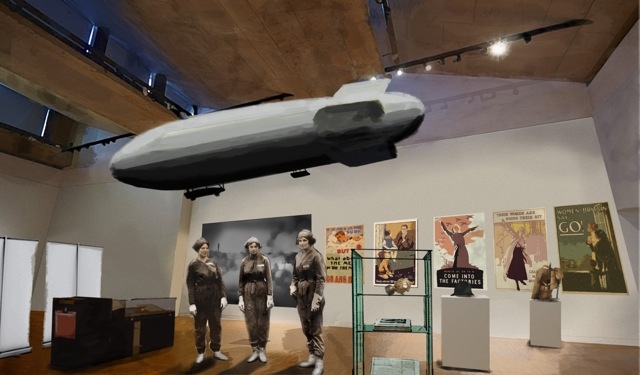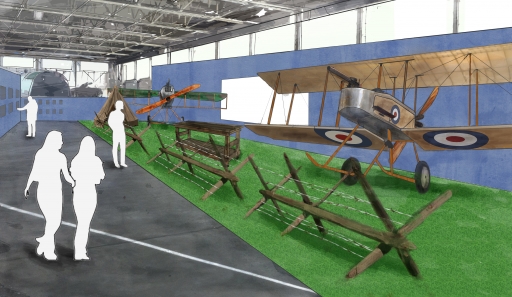A centenary project in Lincolnshire is to highlight the county’s front-line role in the pioneering of UK aviation during the First World War.
Aviation Heritage Lincolnshire (AHL) has been awarded a £423,500 grant from the UK’s Heritage Lottery Fund for its travelling exhibition and education programme, Lincolnshire in World War One: Bastion in the Air, opening in 2017.
‘The story of Lincolnshire’s part in the defence of the realm against the aerial threat of the Zeppelin and the menace of the U-boat is one of national importance,’ explains AHL.
‘Lincoln was one of the world’s largest aircraft production centres in World War One. Through the development of the Royal Flying Corps and the Royal Naval Air Service, who were based at airfields around the county, the world’s first independent air force – the Royal Air Force – came into being.’
The Sopwith Camel fighter was among the planes built by Lincoln agricultural engineering companies harnessed for the war effort.
Two exhibitions, opening at key locations in 2018, will complement the touring centenary programme.
‘Thanks to this grant we will offer the public the opportunity of seeing a depiction of a World War One airfield, including flying replica fighter aircraft from the period, within a hangar on an operational RAF station in 2018,’ says AHL.
There will also be an exhibition at The Collection museum in Lincoln, detailing the technical and social advances resulting from the city’s transformation into a hub of arms production.
 The story of thousands of women, employed in previously male-only engineering jobs to build aircraft, will be explored at The Collection, Lincoln, together with the air war against the Zeppelin (Image: Aviation Heritage Lincolnshire)
The story of thousands of women, employed in previously male-only engineering jobs to build aircraft, will be explored at The Collection, Lincoln, together with the air war against the Zeppelin (Image: Aviation Heritage Lincolnshire)
AHL’s Dave Harrigan and Phil Bonner said: “We are delighted that the Heritage Lottery Fund has given us this support. We have a story here from a century ago, much of which is not widely known, which will be of huge interest not only to the people of Lincolnshire but also those wider afield as well.”
Units of the Royal Flying Corps (RFC) and the Royal Naval Air Service (RNAS) – merged in 1918 to form Britain’s Royal Air Force – were based at Lincolnshire airfields to defend the UK east coast.
In the ground war, Lincoln is also remembered as the birthplace of the first tanks.
Jonathan Platt, Head of Heritage Lottery Fund East Midlands, said: “From the first pilots to the men and women who worked tirelessly in the factories, Lincolnshire made a vital contribution during the First World War. This project will help thousands of people discover this important story and I’m delighted that National Lottery funding is able to play a part in making it happen.”
‘Lincolnshire in World War One: Bastion in the Air’ will run from 2017-2020. Travelling exhibitions will tour the county as part of the project, and there will also be a comprehensive education programme.
Aviation Heritage Lincolnshire, part of Lincolnshire County Council, is working on the project in partnership with West Lindsey District Council.
Source: Aviation Heritage Lincolnshire
Images courtesy of AHL (exhibition visuals)
